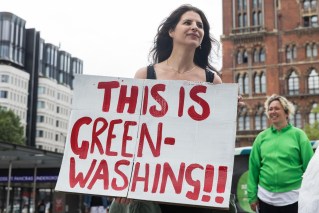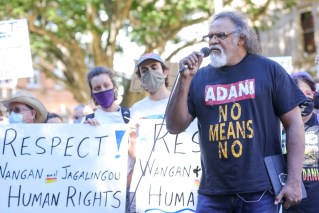Mortgage stress grows but banks may be forced to hike rates even higher
The Reserve Bank could push mortgage rates well above 6 per cent next year, but data already suggests that 40 per cent of Queensland home loan borrowers were facing mortgage stress.


Huge gaps were emerging in mortgage rates with some as high as 9 per cent (file photo)
Economists had considered the Reserve Bank would stop raising its benchmark cash rate early next year when it hit 3.85 per cent, or in the case of the Commonwealth Bank, much sooner.
But Morgan’s Stockbroking economist Michael Knox said he thought the RBA cash rate could reach 4.85 per cent, while the ANZ said that 3.85 per cent may prove too optimistic.
A cash rate of 4.85 would push even the lowest variable mortgage rate close well above 6 per cent from the current level of around 4.3 per cent.
ANZ said if wages or inflation continued beyond expectations “then the RBA may feel it has little choice but to push cash rates above 4 per cent (from the current 3.10 per cent)”.
“Such a move would increase the downside risks to the economic outlook quite considerably,” ANZ said.
Knox said the RBA would continue to increase rates every month (except January when the board does not meet) until August when rates hit 4.85 per cent.
The Commonwealth Bank said a RBA cash rate above 3.5 per cent would significantly increase the risk of recession in 2023, however Knox believes this to be unlikely.
His forecast is for 2 per cent growth.
“Our ability to continue to grow when other countries don’t is really because we have a bipartisan skilled immigration policy so we can keep employment growing and we can keep the economy and knock over inflation without having to slow it down to zero.
“As long as we can keep skilled migrants coming into our economy, we can keep the economy growing.”
Knox said cash rate rises would stop at 4.85 per cent because that was close to where it stopped in 2011.
“We are enjoying a resources boom and a current account boom in Australia, but we did this before,” he said.
“Back in 2011 the Australian cash rate reached a peak of 4.75 per cent and when we get to 4.85 per cent that’s as close as we can measurably get to where we were last time.
However, Digital Finance Analytics found that about 60 per cent of renters in Queensland were now stressed.
Toowoomba’s postcode area of 4350 consistently rates as one of the worst areas in Australia for financial stress and did so again in November. It has 68 per cent of home loan borrowers in mortgage stress.
Toowoomba also has the highest rental stress at 61 per cent.
The next most affected was the Bellbird Park post code of 4300, which takes in Springfield. About 56 per cent of home loan borrowers were financially stressed. It defines stressed as having more money going out than coming in.
Nationally, the people hit hardest were young growing families. About 84 per cent in this cohort who had a mortgage were stressed.
Almost 70 per cent of multicultural families who rented were stressed, but there were also high levels of young affluent renters (66 per cent) and wealthy seniors (68 per cent) who were stressed.
Next year it could get significantly worse when about 25 per cent of mortgage holders roll out of their fixed-rate loans into interest rates that could be double the level they currently hold.
DFA said while stress continued in the high growth suburbs, it was also increasing in other areas, including those that generally be seen as affluent.
“The expectation is that rates will still be high in 2023 and that mortgage delinquencies will rise at the same time as property prices continue to slide,” DFA said.
“We do not expect things to ease ahead.
“Households will need to get to grips with their cash flow and prioritise payments, such as mortgage and rental payments, over other less critical payments.”












